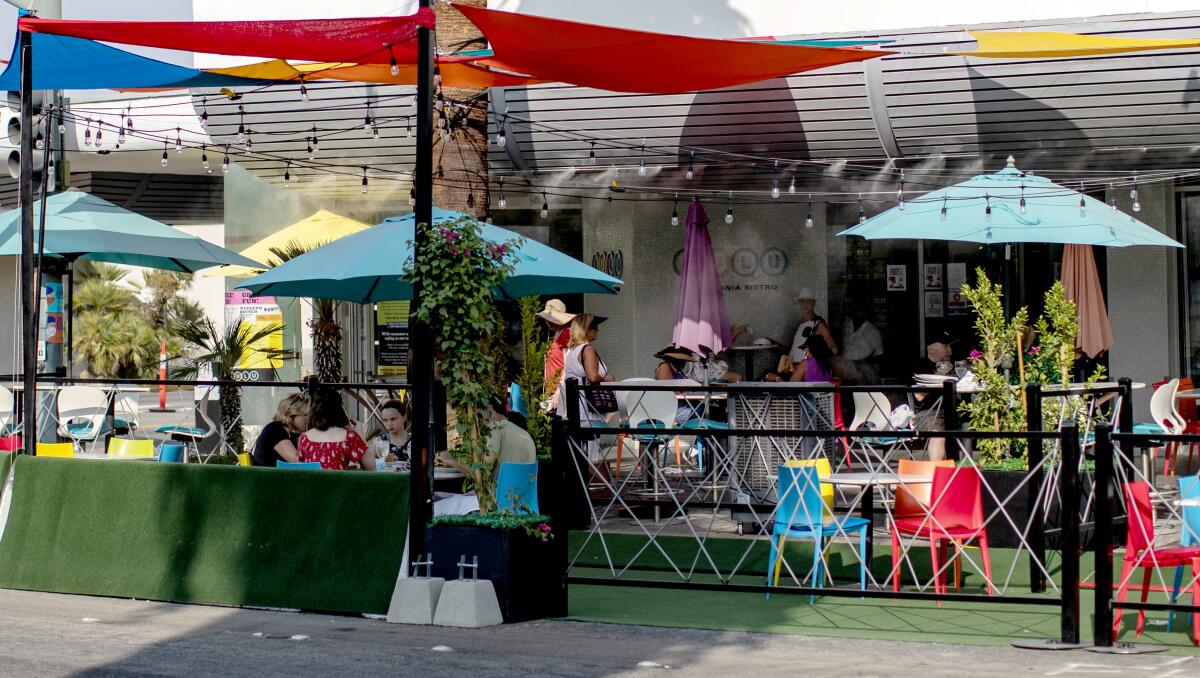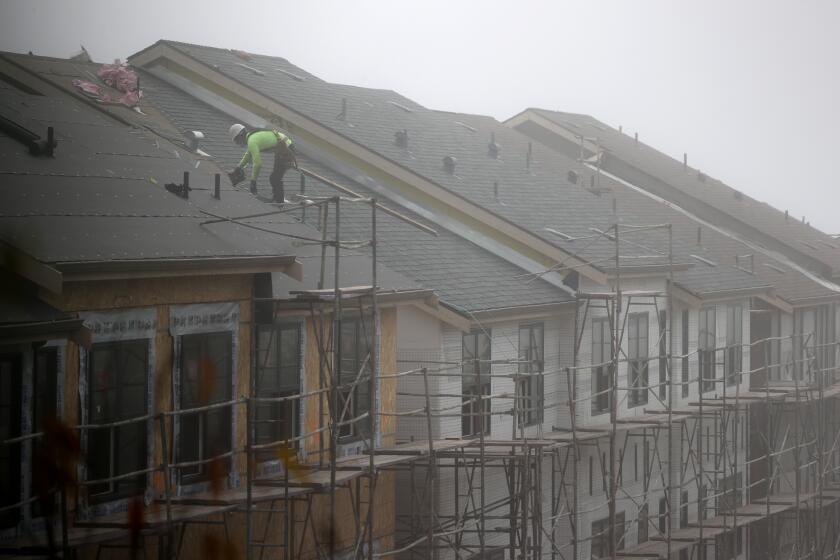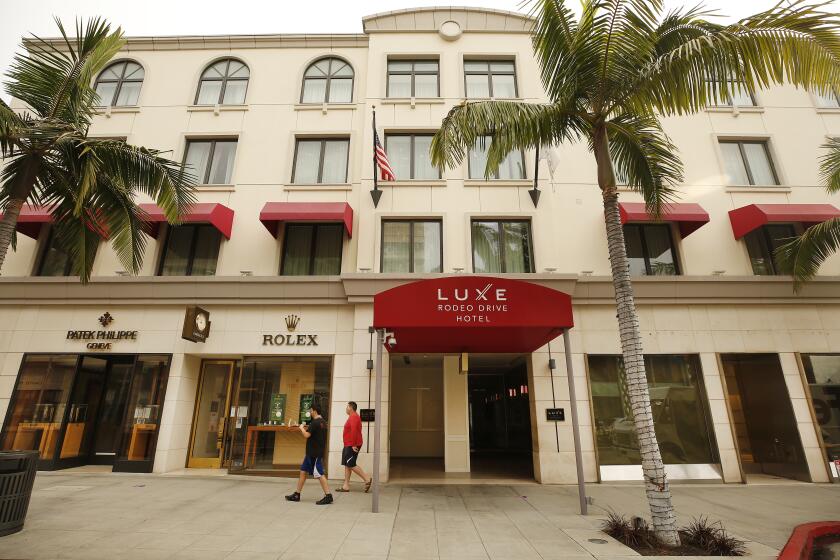California is slowly gaining jobs, but unemployment remains grim

California’s unemployment rate ticked down last month as the state slowly recouped some of its lost jobs, even as it continued to rack up coronavirus cases.
September joblessness was 11%, down from 11.2% in August, state officials reported Friday. That compares with just 3.9% in September of last year.
California has regained 38% of the 2.6 million jobs lost in March and April as the pandemic devastated the economy. In September, payrolls grew by 96,000 nonfarm jobs to 15.98 million, less than August’s gain of 113,800. A year earlier, the state counted 17.41 million nonfarm jobs.
“California’s labor market recovery is clearly decelerating,” said Scott Anderson, chief economist of the Bank of the West in San Francisco. “Virus cases are on the rise, wildfires are decimating California communities, and federal government support is running dry.”
The COVID-19 pandemic has continued to spread across California, with experts saying the true number of people infected is unknown and probably much higher than official tallies. Confirmed cases statewide since the start of the outbreak topped 869,000 as of Friday. The death toll exceeded 16,800.
The nationwide job market was considerably brighter than California’s last month. The U.S. unemployment rate at 7.9% in September was lower than California’s. Since February, California has lost 9.2% of its payroll jobs, compared with 7% nationwide.
More than 2 million Californians were counted as unemployed in September, but that doesn’t include hundreds of thousands of discouraged workers who have dropped out of the job market. The labor force, which includes both job holders and job seekers, has shrunk by 850,000 people since February — pushing down the state’s official unemployment rate.
Many California businesses remain closed, and economists warn that the job market will not strongly recover until the virus is under control.
Many industries have taken a severe hit, but the state’s housing market should enjoy a quick recovery, a UCLA forecast predicts.
“If we keep adding jobs at September’s rate, the state will not return to February’s level of employment until sometime in 2022,” said Taner Osman, research manager at Beacon Economics, a Los Angeles consultancy. “That’s sobering news for those who have lost work since the outbreak of the pandemic.”
The discouraging jobs report comes as negotiations between the Trump administration and congressional Democrats over renewing federal unemployment benefits, along with aid to local and state governments, have broken down. Democrats want a larger stimulus package than Republican are willing to approve.
The $600 weekly federal supplement for unemployed workers expired at the end of July, and a $300 replacement for some workers ran out last month. An emergency benefit for the self-employed and for independent contractors, who do not qualify for state unemployment aid, is slated to end in December.
State and local governments are facing a deep slump in tax revenue. California was counting on a federal stimulus to reverse $11 billion in budget cuts in education, housing and government payrolls. With no aid forthcoming, the state is instituting pay cuts for most of its 230,000 employees.
Businesses fear they’ll be blamed for COVID-19’s spread. They’re fighting for measures to protect them from lawsuits over infections, hospitalizations and deaths.
“Furloughs are turning into permanent layoffs,” said Sung Won Sohn, an economist at Loyola Marymount University. “California may have to brace for a long period of economic doldrums.”
Job postings in California are down 24.8% since January and there has been no uptick since August, according to Michael Bernick, a former director of the state Employment Development Department. “Small businesses are not reopening in significant numbers nor are revenues increasing, in comparison with the recovery among large employers,” he added. “The state’s 45 local workforce boards are reporting very little new hiring.”
Still, seven of California’s 11 industry sectors reported modest gains last month. Leisure and hospitality had the largest increase: It grew by 48,400 jobs, mainly in hotels and restaurants, some of which have set up outdoor dining and stepped up deliveries. But the sector, which has shrunk 28.5% in a year, has a long way to go before it is fully recovered.
Many entertainment venues have yet to reopen. Walt Disney Co. announced in late September that it would lay off 28,000 U.S. workers, largely at its theme parks, cruise line and retail stores.
Other sectors hiring in September were retail trade (up 27,400 jobs), healthcare (up 11,100), and “other services,” which includes businesses such as auto repair and dry cleaning (up 10,900).
Government jobs posted the largest decline last month: The sector shed 14,300 positions, mainly federal census workers.
Regionally, Orange County, with an unemployment rate of 9%, saw the largest job gain, adding 21,000 positions for a total of about 1.57 million.
The Luxe Rodeo Drive is the first L.A.-area luxury hotel to go out of business because of the pandemic. An unusually high loan delinquency rate may mean more hotel closures are likely to follow.
Unemployment in Riverside and San Bernardino counties was 10.4% in September, and payrolls there gained 7,500 jobs.
Los Angeles County, with a jobless rate of 15.1%, gained just 5,600 positions for a total of about 4.94 million.
“Across the state, the unemployment rate correlates with the prevalence of COVID-19,” said Fernando Lozano, a Pomona College economist, adding that the five counties with the highest joblessness are among the 10 counties with the most cases of COVID-19 per 100,000 inhabitants: Imperial, Kern, Tulare, San Joaquin and Los Angeles.
“Households and firms adapt their economic decisions to the pandemic risk,” Lozano said. When they feel at higher risk, “people stay at home, stop going to malls and restaurants.”
The September jobs report is based on two federal surveys, one of 5,100 California households and one of 80,000 businesses in the state, conducted the week of Sept. 12.
More to Read
Inside the business of entertainment
The Wide Shot brings you news, analysis and insights on everything from streaming wars to production — and what it all means for the future.
You may occasionally receive promotional content from the Los Angeles Times.













